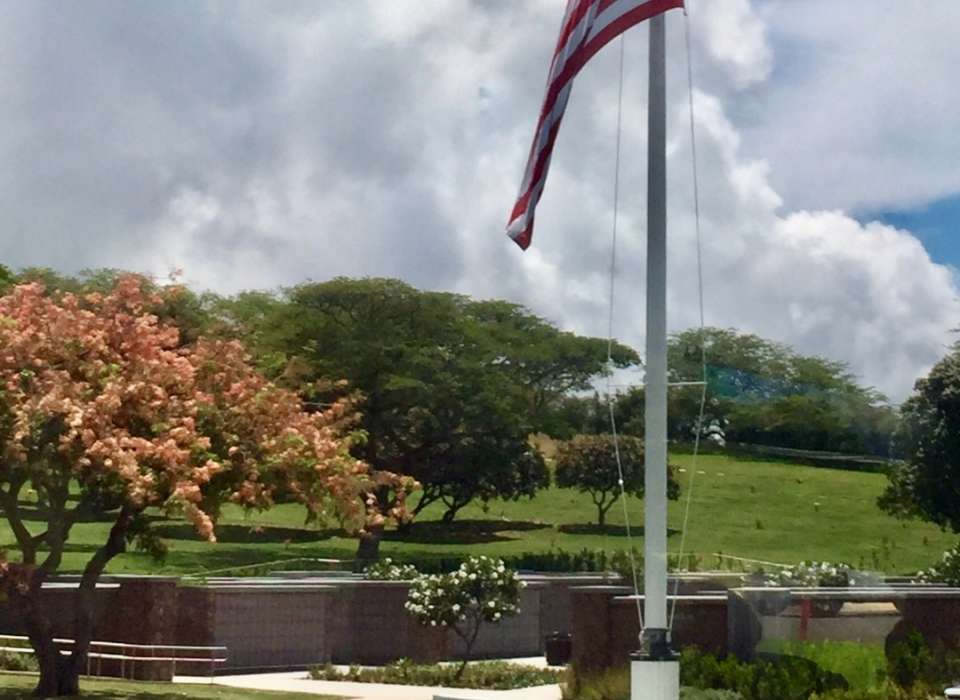Members of the inaugural class of the Museum’s WWII Summer Teacher Institute—Team Pacific—are in Hawaii this week to complete their year of participation in the program. These 30 middle school and high school teachers from around the country came to the Museum in summer 2016 to study World War II in the Pacific with historian and author Richard B. Frank. Each was provided a Museum-created curriculum guide in exchange for a commitment to share its content and the lessons they’d learned with teachers in their hometown. So far, those lessons have been shared with more than 1,000 teachers. The Institute’s second class—Team Europe—will assemble in New Orleans in a few days to study World War II in Europe with Donald L. Miller, PhD, then reconvene next summer for a week of study in Normandy, France.
Members of Team Pacific are sending daily dispatches about their experiences in Hawaii. Here’s a Day Two report from teacher Jacob Blum:
There’s an interesting thing that happens when you tell somebody you are going to study in Hawaii with The National WWII Museum. Invariably, people react like you have just won the lottery or something, and they seem to believe that you are about to embark on some kind of dream vacation. While I could not imagine a more idyllic setting to delve deeper into the study of World War II, I am not solely here on vacation. I am here to become the best teacher I can be, and to gather experiences that will enrich the educational opportunities I am able to provide to my students.
Just to provide an idea on a general day, today’s agenda really centered on the idea of honoring the legacy, contributions, and memory of those who have served in the armed services. As a group we toured the US Army Museum of Hawaii at Fort DeRussy, the National Memorial Cemetery of the Pacific, and the Defense POW/MIA Accounting Agency (DPAA). As I was attempting to soak up as much information as possible, I kept having an image flash into my mind. In the “old” gym of our school in Stanton, Nebraska, we have a plaque with the following names: Laurice Axen, Carl Buckendahl, Robert Hoefener, Stanley Johnson, Quentin Johnson, Leonard Moritz, Louis Kassebaum, Morris Wiebold, and Glenn Matthes. I understand that most people reading these names do not have the slightest inkling of who these gentlemen were, but these nine young men, who paid the ultimate sacrifice during World War II, came from a community of only 1,500 people.
Today while touring the DPAA, I was reminded of the importance of keeping the sacrifices of these men alive. I was also greatly moved by the effort that is being made by the DPAA to identify as many unknown soldiers as possible so that their remains can be returned to their loved ones. The DPAA provides a tremendous service to these families and our country by helping us to live up to our belief as a nation that nobody should be left behind, and that nobody’s story or sacrifice should be forgotten.
Visit ww2classroom.org to see WWII Summer Teacher Institute curriculum guide content.
Special thanks to the David I. Oreck Foundation and the Patrick F. Taylor Foundation for their generous support of this program.

